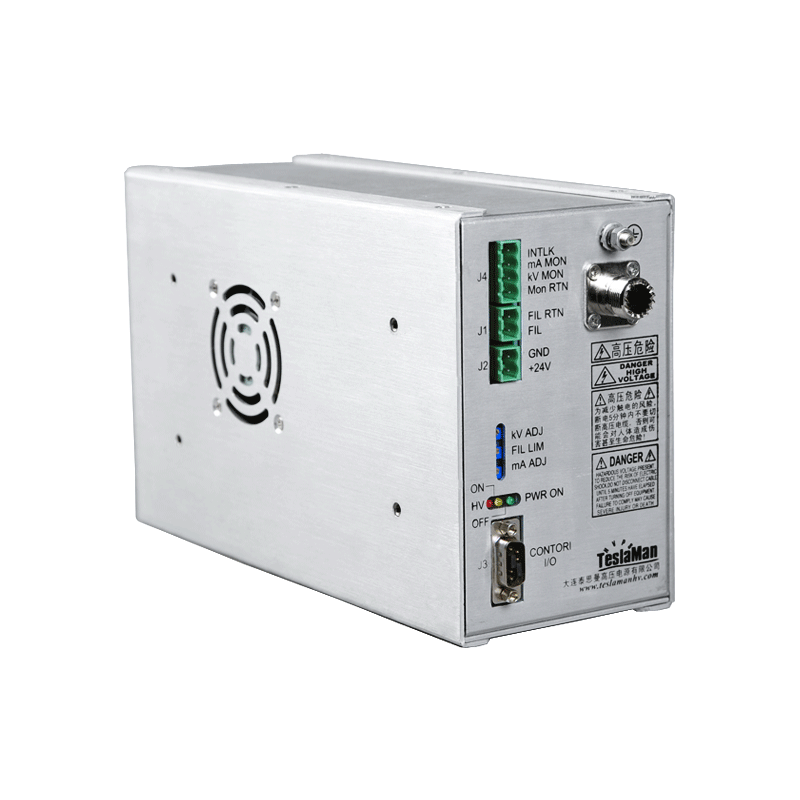Analysis of High-Voltage Power Supply Applications in Vacuum Coating: Technical Adaptation and Performance Optimization
1. Special Requirements of Vacuum Coating Processes for High-Voltage Power Supplies
Vacuum coating technology is widely used in optics, electronics, decoration, and other fields. Its core processes (such as magnetron sputtering, ion plating, electron beam evaporation) impose stringent requirements on high-voltage power supplies. On one hand, different coating materials (metals, oxides, carbon-based films) require specific voltage waveforms and power characteristics. For example, titanium target sputtering needs a DC bias of -500V to -1500V, while reactive sputtering processes rely on pulse modulation to prevent target poisoning. On the other hand, the plasma load during coating exhibits strong nonlinearity, demanding power supplies with millisecond-level dynamic response capabilities to maintain film uniformity and deposition rate stability. Traditional power supply solutions often lead to increased film defect rates due to excessive voltage ripple (>3%) and low power factor (<0.8).
2. Targeted Design of High-Voltage Power Supply Technical Solutions
1. Multi-Mode Output Waveform Modulation Technology
New-generation power supplies integrate three output modes: direct current (DC), pulsed direct current (DC-Pulsed), and medium-frequency alternating current (MF-AC). The DC-Pulsed mode adjusts the duty cycle (5%-95%) and frequency (1-100kHz), suppressing arc discharge during metal film deposition and reducing film surface roughness by 40%. The MF-AC mode uses 13.56MHz bipolar pulses, effectively solving the anode disappearance problem in reactive sputtering and increasing the deposition rate of oxide films to 2.5 times that of traditional solutions.
2. Adaptive Load Matching Control System
An adaptive matching network based on real-time impedance monitoring can identify plasma load changes within 10ms and regulate LC tuning parameters to keep reflected power below 5%. Tests in an optical coating factory show that after implementing this system, the sheet resistance consistency of ITO films improves from ±12% to ±3%, significantly enhancing product yield.
3. High-Efficiency Thermal Management and Enhanced Electromagnetic Compatibility
A composite cooling structure combining liquid cooling and heat pipes controls the junction temperature of power devices below 75℃, meeting the requirements of 24-hour continuous coating. In EMC design, multi-layer shielding and differential/common-mode filter networks suppress the power supply's radiation interference in the radio frequency band (30MHz-1GHz) to below -50dBμV, preventing interference with the electron beam control systems of coating equipment.
3. Typical Application Scenarios and Performance Verification
1. Hard Coating Preparation
During the deposition of TiAlN coatings on cutting tools, the high-voltage power supply modulates the pulsed negative bias (-800V, 20kHz), increasing ion energy to 150eV and enhancing film-substrate adhesion. Comparative tests show that cutting tools using this solution have a 60% longer service life and a 35% lower wear rate.
2. Coating of Flexible Electronic Devices
For depositing transparent conductive films on flexible PET substrates, the power supply adopts low-ripple (<1%) DC output with a programmable ramp-up function, avoiding thermal deformation of the substrate caused by sudden voltage changes. In actual production, the sheet resistance uniformity error of the film is controlled within ±5%, and the light transmittance exceeds 92%.
4. Future Development Trends and Challenges
As vacuum coating evolves towards nanoscale precision and large-area uniformity, high-voltage power supplies need to further improve output resolution (targeting 1V/1mA levels) and dynamic response speed (<1ms). The introduction of Gallium Nitride (GaN) devices is expected to increase the power supply switching frequency to the MHz level, reducing volume by 30% and achieving an efficiency breakthrough of 95%. However, technical challenges such as electromagnetic interference suppression under high-frequency conditions and nonlinear modeling of plasma loads must be overcome to promote the intelligent and green upgrading of vacuum coating processes.




















